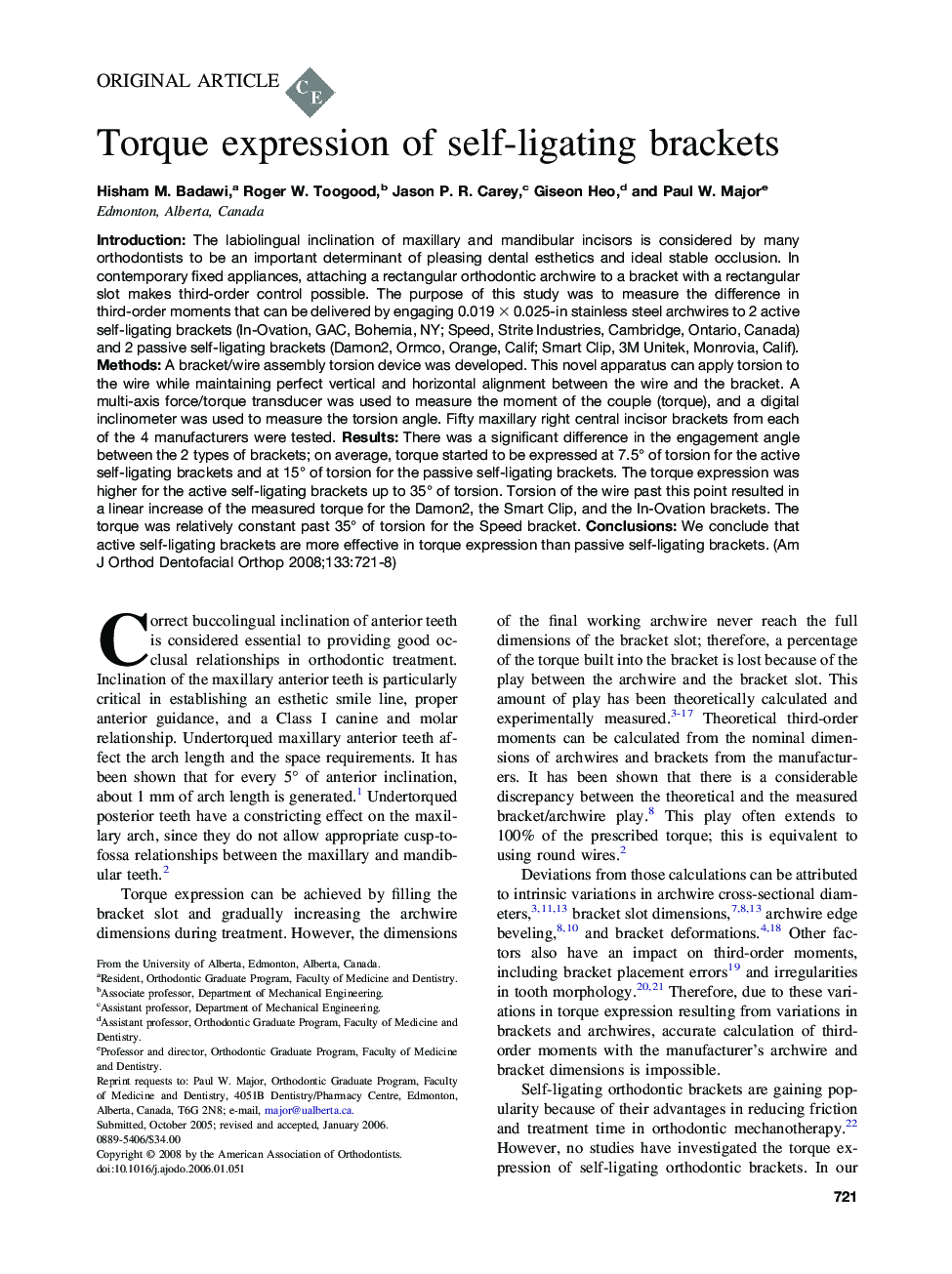| Article ID | Journal | Published Year | Pages | File Type |
|---|---|---|---|---|
| 3120241 | American Journal of Orthodontics and Dentofacial Orthopedics | 2008 | 8 Pages |
Introduction: The labiolingual inclination of maxillary and mandibular incisors is considered by many orthodontists to be an important determinant of pleasing dental esthetics and ideal stable occlusion. In contemporary fixed appliances, attaching a rectangular orthodontic archwire to a bracket with a rectangular slot makes third-order control possible. The purpose of this study was to measure the difference in third-order moments that can be delivered by engaging 0.019 × 0.025-in stainless steel archwires to 2 active self-ligating brackets (In-Ovation, GAC, Bohemia, NY; Speed, Strite Industries, Cambridge, Ontario, Canada) and 2 passive self-ligating brackets (Damon2, Ormco, Orange, Calif; Smart Clip, 3M Unitek, Monrovia, Calif). Methods: A bracket/wire assembly torsion device was developed. This novel apparatus can apply torsion to the wire while maintaining perfect vertical and horizontal alignment between the wire and the bracket. A multi-axis force/torque transducer was used to measure the moment of the couple (torque), and a digital inclinometer was used to measure the torsion angle. Fifty maxillary right central incisor brackets from each of the 4 manufacturers were tested. Results: There was a significant difference in the engagement angle between the 2 types of brackets; on average, torque started to be expressed at 7.5° of torsion for the active self-ligating brackets and at 15° of torsion for the passive self-ligating brackets. The torque expression was higher for the active self-ligating brackets up to 35° of torsion. Torsion of the wire past this point resulted in a linear increase of the measured torque for the Damon2, the Smart Clip, and the In-Ovation brackets. The torque was relatively constant past 35° of torsion for the Speed bracket. Conclusions: We conclude that active self-ligating brackets are more effective in torque expression than passive self-ligating brackets.
